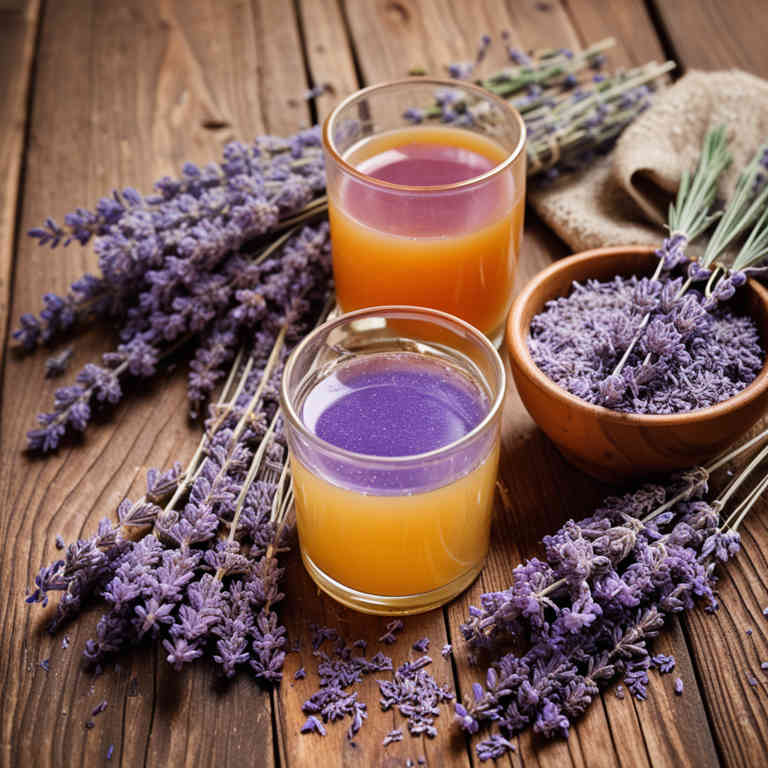Lavandula angustifolia juice for medicinal use

Lavandula angustifolia juice is a concentrated extract derived from the fresh or dried leaves and flowers of the lavender plant.
It is commonly used in herbalism for its calming and soothing properties. The juice is often applied topically to treat skin irritations, insect bites, and minor wounds due to its antiseptic and anti-inflammatory effects. It may also be ingested in small amounts to help alleviate anxiety and promote relaxation.
This preparation is valued for its aromatic and therapeutic benefits in both physical and emotional well-being.
Uses
Lavandula angustifolia juice has been used to treat a variety of ailments throughout history, dating back to ancient civilizations such as the Greeks and Romans, who valued its calming and antiseptic properties.
Traditionally, it was used to soothe skin irritations, reduce inflammation, and promote relaxation due to its aromatic compounds. In modern times, the juice is still valued for its potential anti-inflammatory and antimicrobial effects, often used in topical applications for minor wounds or as a natural remedy for stress. It is also incorporated into aromatherapy and skincare products for its soothing and refreshing benefits.
Despite its long history, further scientific research is needed to fully understand its therapeutic potential.
Benefits
Lavandula angustifolia juice has health benefits such as promoting relaxation, reducing stress, and improving sleep quality.
It contains antioxidants and anti-inflammatory compounds that may support skin health and reduce irritation. The juice can also aid in soothing digestive issues and alleviating symptoms of anxiety. Its calming properties make it a natural remedy for mood enhancement and emotional balance.
Regular consumption of Lavandula angustifolia juice may contribute to overall well-being when used as part of a holistic health routine.
Constituents
Lavandula angustifolia juice active constituents include linalool, lavandic acid, and terpenes such as limonene and camphor.
These compounds contribute to the juice's calming and soothing properties. Linalool is known for its mild sedative effects and ability to reduce anxiety. Lavandic acid may support skin health and have anti-inflammatory properties.
The terpenes in the juice can help promote relaxation and may aid in reducing stress and improving sleep quality.
Preparation
To make Lavandula angustifolia juice, first, harvest fresh lavender flowers from the plant during early morning when the oils are most concentrated.
Wash the flowers gently to remove any dirt or debris, then place them in a blender with a small amount of water. Blend until a smooth mixture is achieved, then strain the liquid through a fine mesh sieve or cheesecloth to remove plant matter. Allow the juice to sit for a few hours to allow the essential oils to infuse into the liquid.
Finally, store the juice in a cool, dark place or refrigerate it for up to a week to preserve its potency and aroma.
Side Effects
Lavandula angustifolia juice may lead to gastrointestinal discomfort, including nausea, vomiting, and diarrhea, especially when consumed in large quantities.
It can also cause skin irritation or allergic reactions in individuals sensitive to lavender. Prolonged use may result in liver damage due to the presence of certain compounds. In high doses, it may interact with medications, particularly those affecting the central nervous system.
It is advisable to consult a healthcare professional before using lavender juice, especially for prolonged periods or in combination with other treatments.